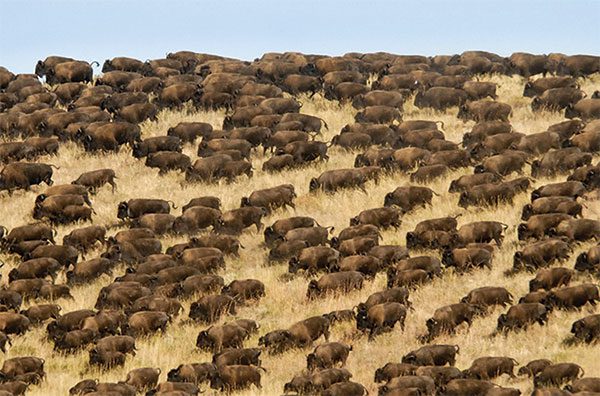
The Park’s 50th annual roundup goes the end of September. Photo courtesy Custer State Park.
In a questionable move, officials of Parks Canada have relocated 16 bison—primarily pregnant two-year-olds?—?to a fenced pasture in the Panther Valley near Sundre, Alta., in Banff National Park.
Park officials claim it as a “historic homecoming” aimed at re-establishing a herd.
Parks Canada officials state that in the summer of 2018, the herd—which by then will have grown to approximately 40 head?—?will be released into a 1,200-sq-km area on the eastern slopes of the park where “they can interact with other native species, forage for food and integrate into the ecosystem.”
“This is a great day for Banff National Park. It’s a great day for Canada and frankly, it’s one of the great days for wildlife conservation in the history of North America,” says Harvey Locke, a conservationist, writer and trustee with the Eleanor Luxton Historical Foundation in Banff.
Today, bison number in the millions. In Alberta, free-ranging bison (outside of the Bison Management Area in the northwest corner of Alberta) are designated “livestock” and are not wildlife. Because they are not considered wildlife, they have no status under Alberta’s Wildlife Act.
The rutting, or mating, season lasts from June through September, with peak activity in July and August. During this time the animals are belligerent, unpredictable, and most dangerous. Bison can outrun a horse. The release site in Banff National Park is popular with hikers and horseback enthusiasts.
No plans were announced as to how the bison herd population would be controlled.
While conservation groups have applauded the idea, ranchers on the eastern slopes have criticized the plan. They’re worried the bison could escape, damage property or spread disease to livestock.
“I’m not sure if it’s smart,” said local rancher Bryn Thiessen. “I guess we’ll see. But compared to putting elk in Suffield—it’s brilliant.”












